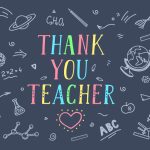One of my greatest joys is getting students excited about reading and writing. As a child, I loved to do both. Starting in first grade, I wrote poems in a marble composition book, and if I wasn’t writing, there was usually a book in my hand—or in the hand of someone reading to me, most often my great-aunt, Lucille. My favorite books were Frog and Toad, Curious George, Amelia Bedelia, Charlotte’s Web, James and the Giant Peach, and The Five Little Peppers and How They Grew. As I got older, I also developed a love for series like Mrs. Piggle Wiggle, Pippi Longstocking, and Betsy, Tacy, and Tib; and I read anything by Beverly Cleary and Judy Blume.
None of these books are about Black children or written by Black authors. Fortunately, I still loved reading, but some children can be turned off to reading if none of the characters look like them and/or if the voices and experiences of the characters are not like theirs.
My 30-year career as an educator provides a perspective that makes me immensely aware of the importance of diverse books for children. When I taught in the elementary classroom, it was difficult to find diverse literature for my students. One of my most memorable experiences as a fifth-grade teacher was reading Lulu Delacre’s Salsa Stories with my students. The book features Latine characters and includes dialogue in Spanish. Though all my students enjoyed the book, the comment I still remember is a Latine student declaring, “This is the first time I’ve read a story that reminds me of my family.”
Children need to experience this sense of belonging every day in our schools. One way teachers and librarians can do this is by curating a diverse list of books that is representative of all students. Educators can evaluate their classroom libraries with this Equity Audit checklist to ensure children have access to a variety of books in which they can see themselves.
Students should not only see themselves in books, but they should also see and learn about those different from themselves. Dr. Rudine Sims Bishop, professor emerita at Ohio State University, coined the phrase “windows, mirrors, and sliding glass doors” to describe this. Books are sometimes windows, offering views of worlds that may be real or imagined, familiar or strange. Bishop says:
These windows are also sliding glass doors, and readers have only to walk through in imagination to become part of whatever world has been created or recreated by the author. When lighting conditions are just right, however, a window can also be a mirror. Literature transforms human experience and reflects it back to us, and in that reflection, we can see our own lives and experiences as part of the larger human experience. Reading, then, becomes a means of self-affirmation, and readers often seek their mirrors in books.
When I’ve shared my books with children, I have witnessed the connection and glee when they see themselves in a book. When I read Let’s Dance!, a young girl said, “My mom wears one of those,” in reference to the hijabi ballet dancer, and a mother said, “I love the beautiful shades of brown. I’ve never seen a book like this before with so many children of color. Thank you.”
When I read Together We Ride, children are always eager to tell me their own bike riding stories, but when I read the book to a Daddy and Me Literacy Program, where all of the fathers and children were Black, I knew this book was “home” for them. When I read Ride, Roll, Run: Time for Fun! during a school visit, two white boys later approached me with copies of the book and asked me to sign them. Yes, my books are for them, too. What a wonderful anti-racist approach to have white children reading and enjoying books that feature predominantly BIPOC children. Though I want BIPOC children to see themselves in my stories, I want other readers to realize they can relate to the characters, too.
I believe that all children will be able to enjoy my Scholastic Acorn early reader series, Rainbow Days!, which releases on May 2, 2023. The books feature Zoya and her puppy, Coco, who love to make art. I hope these books will delight readers and encourage them to create their own art. I also hope teachers will encourage students to design creative projects and explore the work of Black artists. All children should see themselves as artists, knowing that with their imagination and a paintbrush, markers, or whatever they’d like, they can make something fabulous!
Art is a wonderful vehicle for expressing oneself just as writing is. It provides a way to be seen and heard, valued and validated. Children need to know that they matter, that their stories matter, and that they can be authors of their own stories—and illustrate them, too. Having children create their own stories and art will guarantee a reflection and celebration of the diverse world in which we live.






